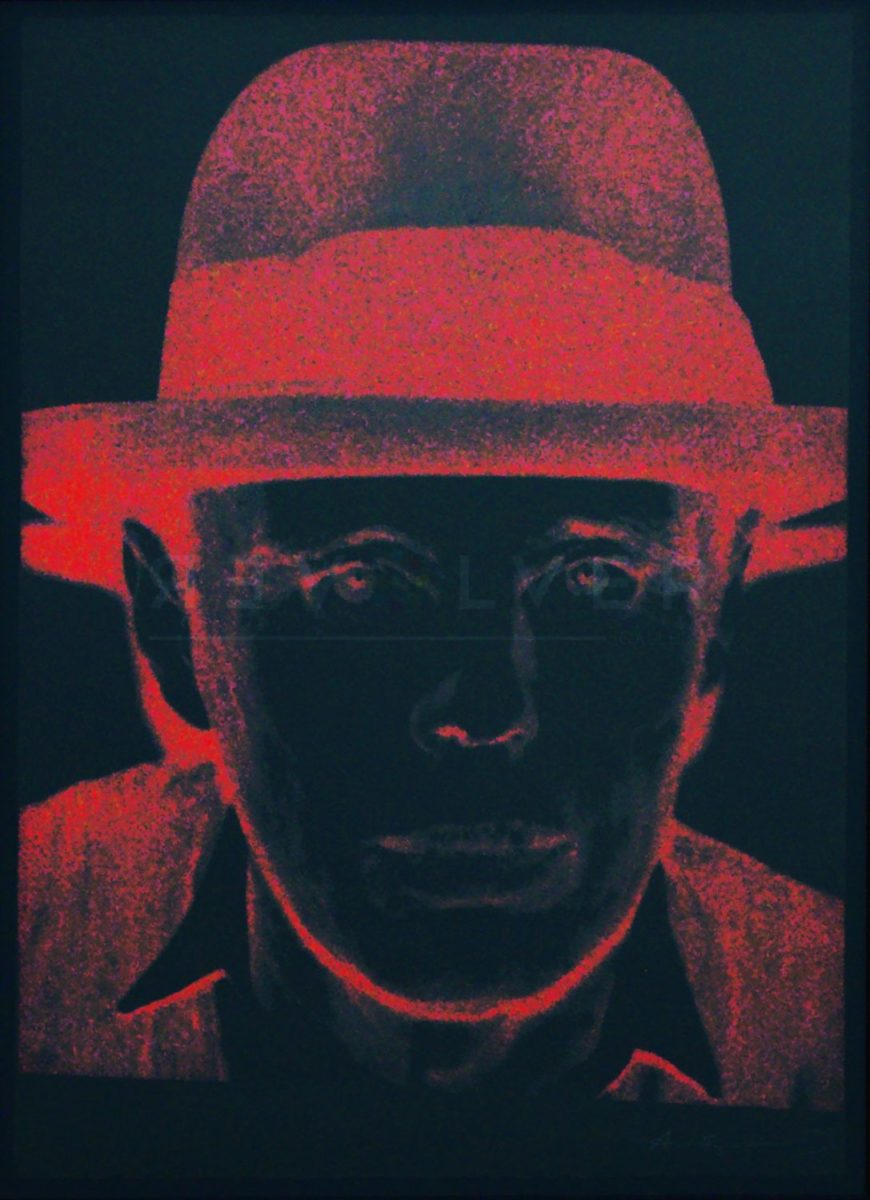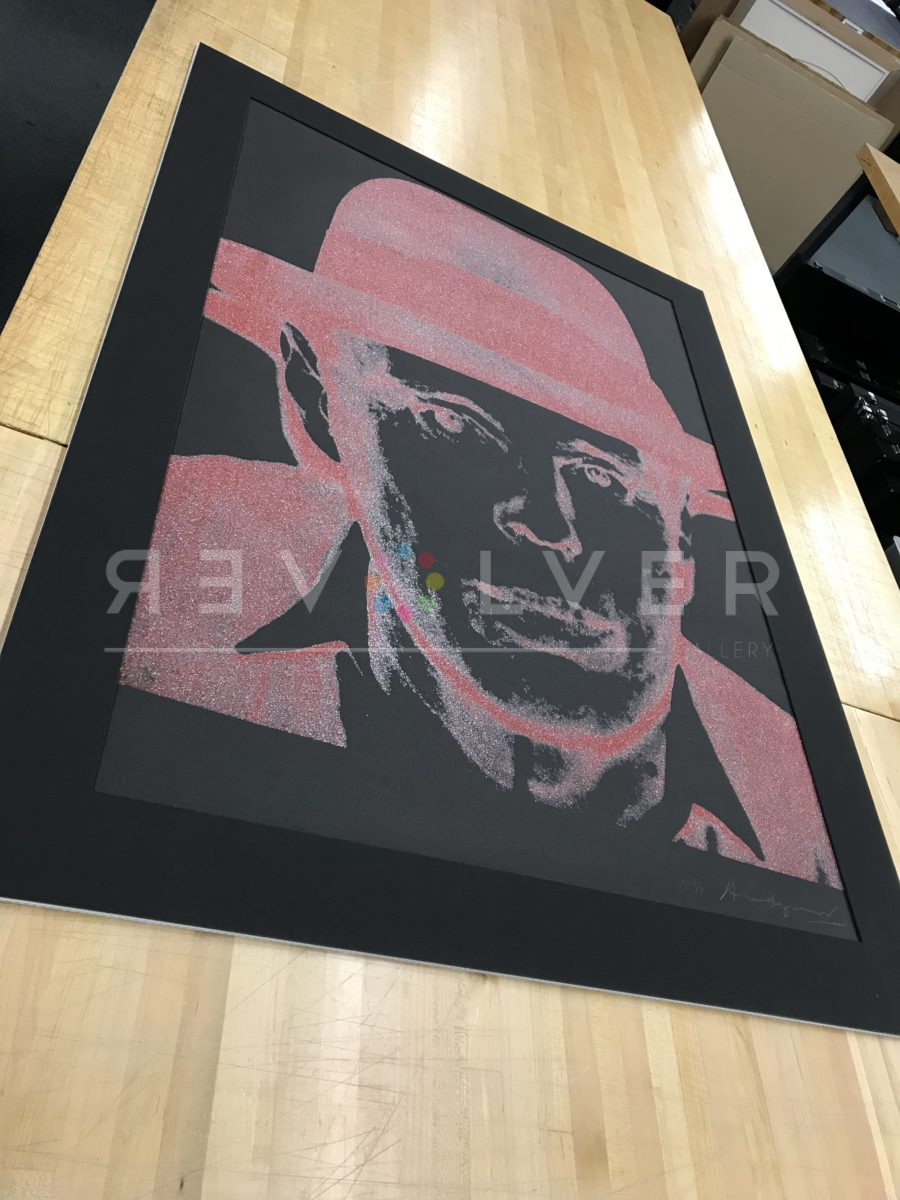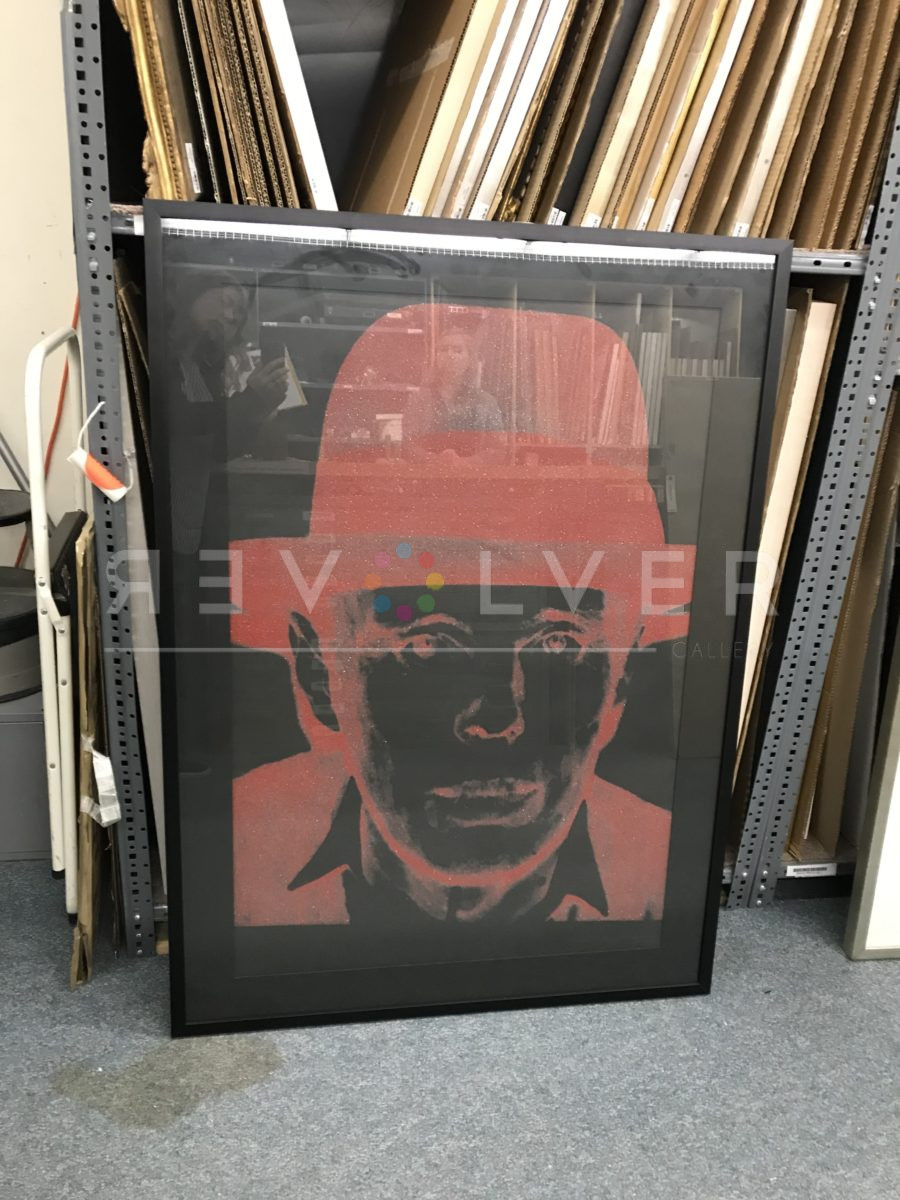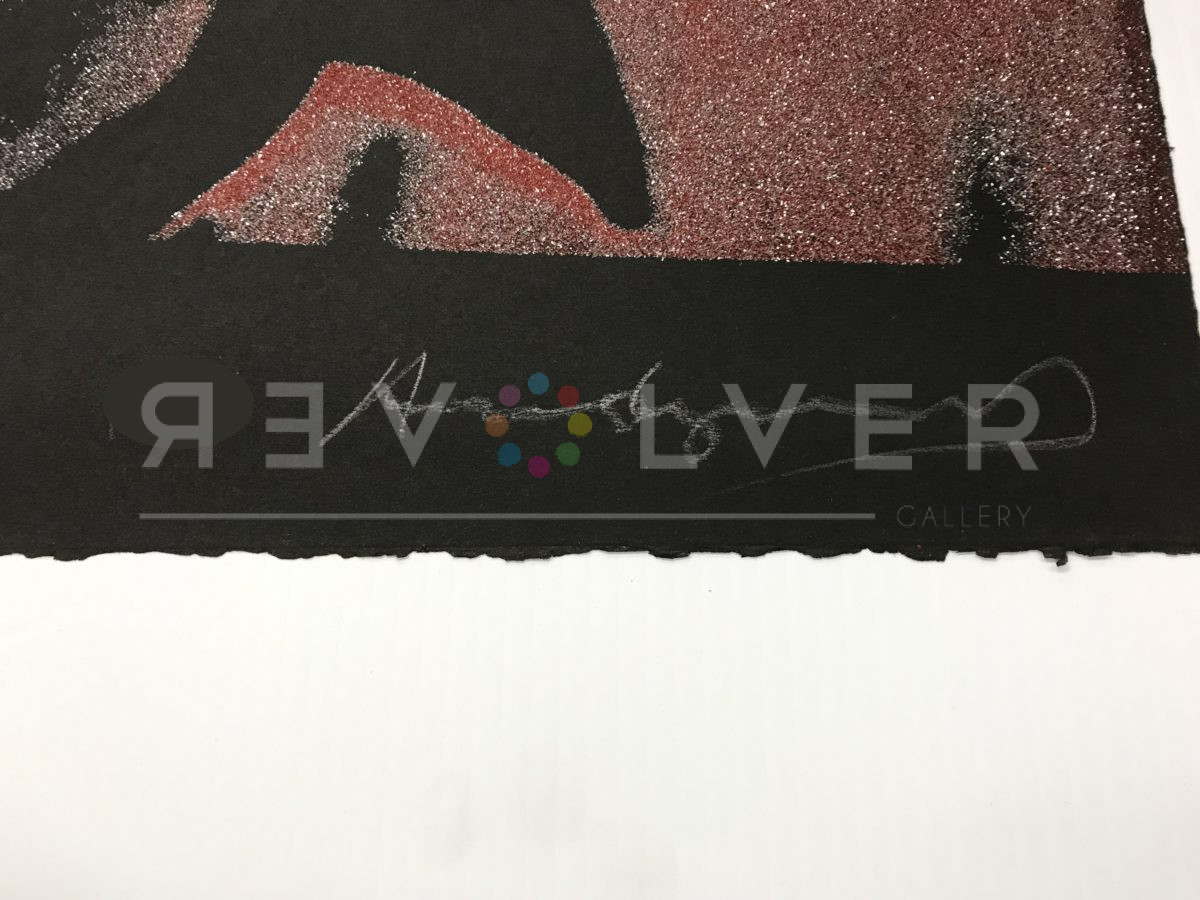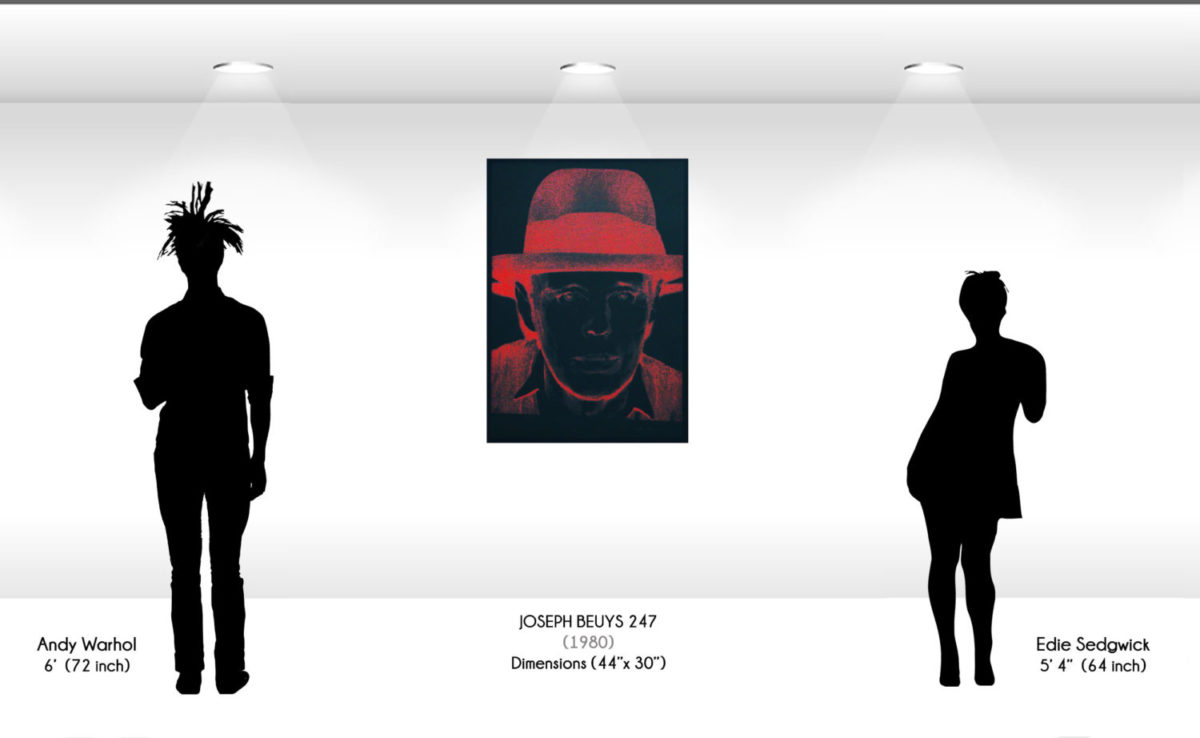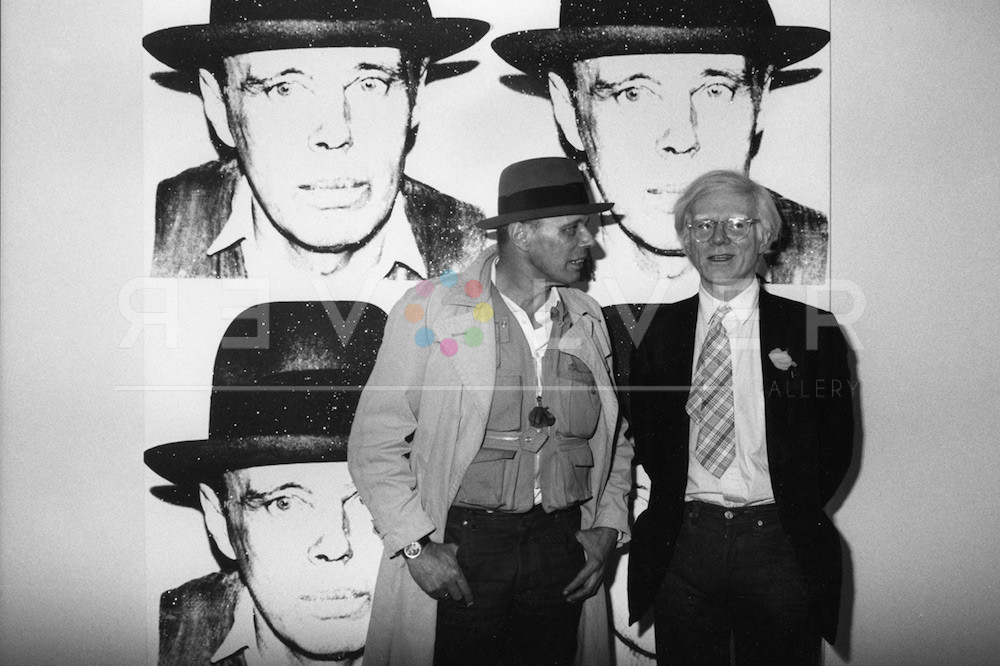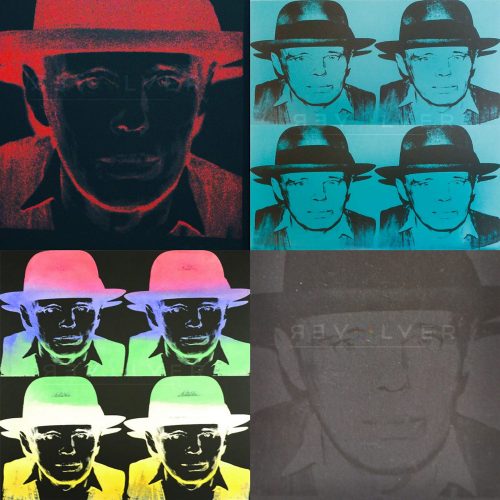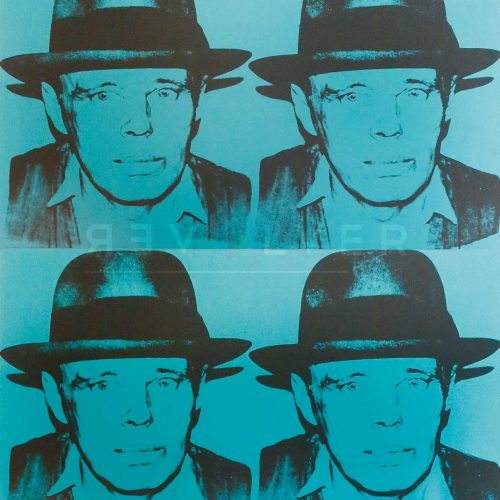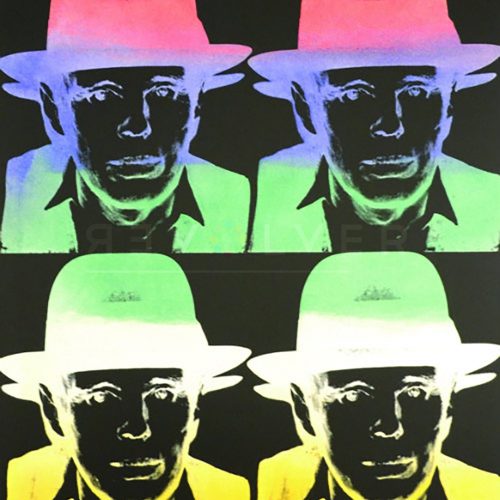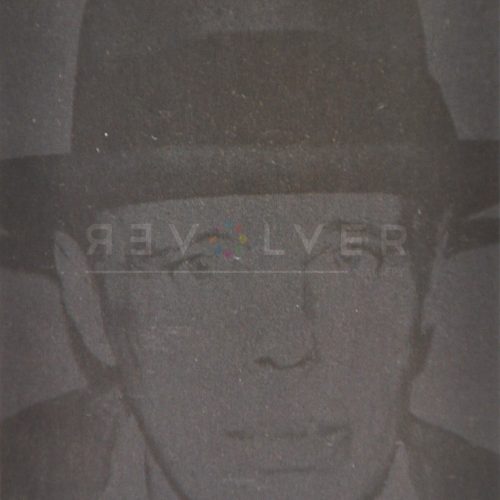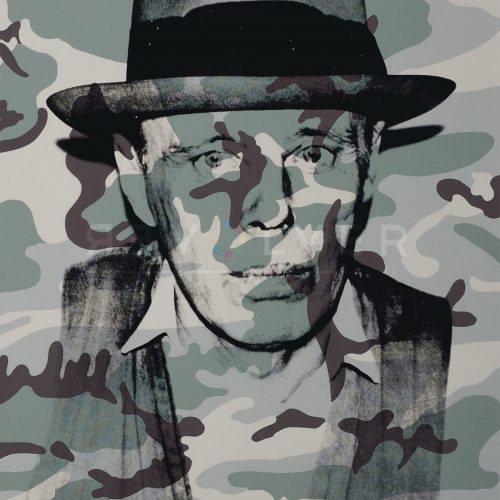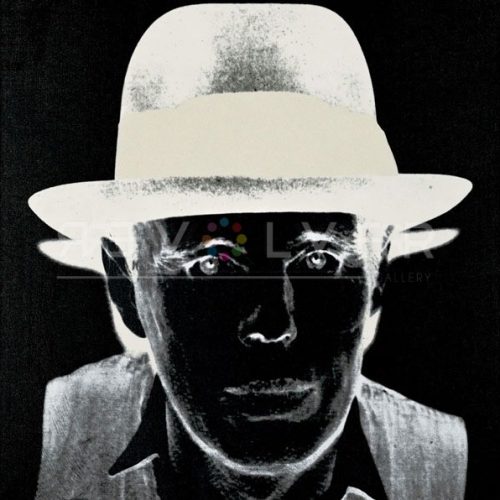Joseph Beuys 247 by Andy Warhol is a screenprint portrait of the eponymous German artist, lecturer, and “social sculptor”, and part of the greater Joseph Beuys complete portfolio. It was created in 1980 and sourced from a Polaroid photo taken by Warhol when he met Beuys at Hans Mayer gallery in Düsseldorf in 1979.
Joseph Beuys 247 exhibits Warhol’s standard style of portraiture at the time, and now stands as an iconic hallmark of his later career. What’s remarkable is how much mileage Warhol was able to get from the one shot. Each print in the series, although made of the same constituent parts, feels distinctly different from each other and displays different attitudes in color, presentation, and even, meaning. There is a playfulness, a playfulness that Beuys no doubt appreciated. Like the minimalist classical composers of the 1960s, Warhol made repetition a major focus of his work and consistently re-contextualized basic ingredients to provide multiple perspectives on a small set of artistic elements.
This piece provides a good example of the above stated claims. In a way, Joseph Beuys 247 is unremarkable in the context of the entire series in which it is a part: it uses the same screenprinted images of Beuys, centered on a black background, and, like Beuys 245, that image is inverted, adding an alienating air and turning Beuys into something akin to a ghost. However, there is a variation. Instead of white, the inverted image is now red. Simple? Perhaps. The slightly brownish and clay-like red grounds this version of Beuys though, attenuating the potential fright encountered in Beuys 245 and making him different by way of materiality. In this case, Beuys becomes foreign not by transcending the terrestrial, but by becoming it. This may reflect the fascination with material items (felt and fat in Beuys’ case) that the artist exhibited in his own works. Thus, Joseph Beuys 247 may be Warhol’s most authentic depiction of the great artist.
Video: Joseph Beuys meets Andy Warhol (1979, at Hans Mayer gallery in Dusseldorf).
Video: Joseph Beuys – How to Explain Pictures to a Dead Hair (1965, at the Galerie Schmela in Düsseldorf).
Photo of Warhol and Beuys courtesy of Schellmannart.com.

